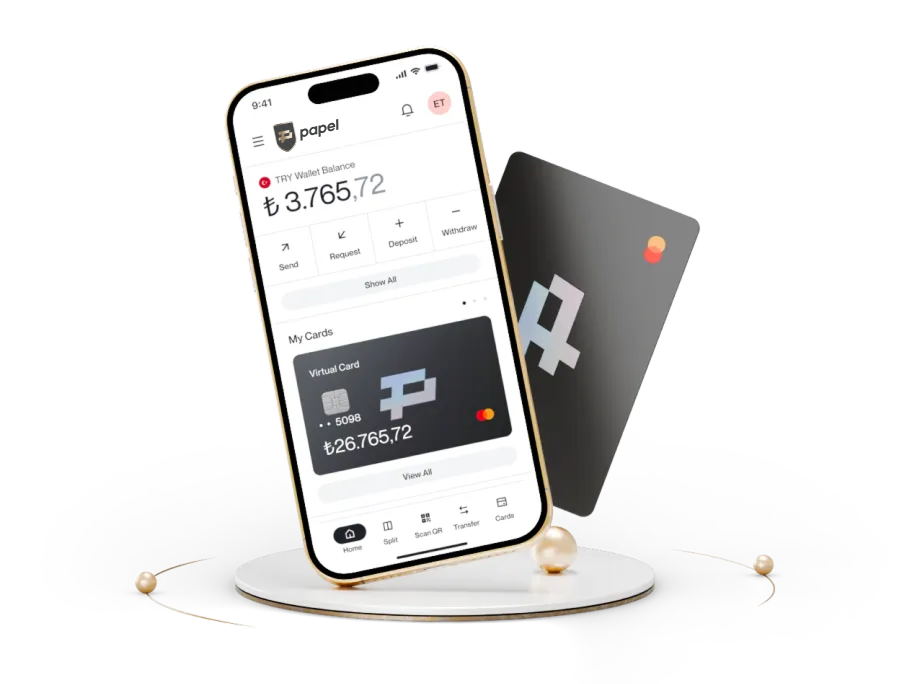How Does the Payment Approval Process Work in E-Commerce?
Payment approval is essential to ensure transaction security, protect consumer rights, and prevent erroneous transactions. However, users may encounter various issues, and knowing how to proceed during this process is necessary to improve their shopping experience. This article will comprehensively examine how the payment approval process works, why it is so important, and provide solutions for everyday problems.
What is Payment Approval?
Payment approval refers to the process in which the buyer or the payment service provider consents to the transaction. This approval, which is usually provided through various verification methods before or after the payment, is crucial in enhancing security and improving the customer experience, especially in digital payment systems and e-commerce platforms. For example, in online shopping, obtaining payment approval through methods such as 3D Secure verification, approval via mobile banking applications, or entering codes sent via SMS/email is possible.
Why Is Payment Approval Important?
The payment approval stage is a critical aspect that must be considered in online shopping. Some of the reasons why this approval is essential can be listed as follows:
Ensures Security
Payment approval, which prevents unauthorized transactions and protects against fraud, is used to verify users' identities, especially in online transactions. Payment approval, which ensures the security of both the buyer and the seller, is significant for protecting customer information and ensuring transaction security.
Prevents Errors
Payment approval allows users to check their payment information, preventing incorrect payments and thus helping avoid making payments to the wrong amount or recipient.
Protects Consumer Rights
Through payment approval, unauthorized payments are prevented. Thus, consumers maintain control over their payments and their rights as consumers are protected.
The Payment Approval Process in Online Shopping
The payment approval process protects consumers' financial information and allows sellers to securely receive payments, which is mainly used in virtual store shopping. This process begins when the customer selects the product or service they wish to purchase on the e-commerce site and adds it to the shopping cart. Subsequently, the customer enters their credit or debit card information on the payment page.
After the customer enters their information, the 3D Secure system is activated to provide an additional layer of security against fraud. A one-time password the bank sends via SMS or mobile application is used to verify identity.
The bank’s systems check the payment information entered by the customer, and the 3D Secure verifies the bank's, and if the information is correct and valid, the transaction is approved. After the bank-approved transaction is reported to the e-commerce site, the order is processed. Once approval is obtained, the payment process is completed, and the seller prepares the order and sends it to the customer.
The Role of Banks and Payment Providers
Banks and payment service providers play a critical role in ensuring security during the transaction process in online payment systems. Banks that enable customers to make payment transactions with credit or debit cards also ensure that funds reach the recipient through EFT, wire transfer, and other banking services. Additionally, they continuously implement security measures to protect customer information and prevent unauthorized transactions.
Furthermore, they ensure the security of payment transactions by using advanced security protocols and fraud detection systems. Additionally, banks must comply with the rules established by regulatory institutions such as the Central Bank of the Republic of Turkey (CBRT) to ensure that payment systems operate uninterruptedly and securely.
Payment service providers, which act as a bridge between sellers and buyers and enable payments to be made quickly and securely, develop user-friendly payment infrastructures for e-commerce sites and other businesses through various services such as virtual POS, digital wallets, and mobile payment solutions. These infrastructures, which facilitate the integration of different payment systems and improve the customer experience, operate under the 6493 Law and CBRT regulations, setting security and transparency standards in payment systems and contributing to the protection of consumers.
3D Secure and Other Security Measures
Various protocols and measures, including 3D Secure, have been developed to enhance security in online payment transactions. The 3D Secure system, a protocol developed to improve security in online credit and debit card transactions, aims to reduce the risk of fraud by creating a three-dimensional security layer between the cardholder, the bank, and the merchant. The cardholder's online shopping activates This system as an additional authentication step. Typically, a one-time password is sent to the cardholder's red mobile phone, and after the cardholder enters this password in the relevant field, the payment transaction is approved.
3D Secure is one of the most common security protocols developed for security, but it is not the only one. Other security measures used to ensure security during the online payment process include:
SSL/TLS Encryption: Security protocols that encrypt data transmission between websites and servers to prevent third parties from accessing this data. Sites with SSL or TLS certificates start their URLs with “https:/" and ar," indicated with a lock icon in the browser.
PCI DSS: The Payment Card Industry Data Security Standard (PCI DSS) is an international standard established for securely storing and processing card information. Businesses complying with this standard enhance payment security by preventing data breaches.
Two-Factor Authentication (2FA): A security application that requires users to use a second authentication method, such as a code sent to their mobile phone and their password, when logging in or making payments. This method helps protect accounts against unauthorized access.
CVV/CVC Codes: These three-digit codes on the back of cards provide an additional layer of security in online transactions. Entering this code during the transaction helps verify that the card is in the user’s.
Fraud Detection and Prevention Systems: AI and machine learning-based systems detect suspicious or unusual transactions and prevent fraud attempts. These systems analyze user behaviors, identify anomalies, and, if necessary, stop the transaction or request additional verification.

Common Problems Encountered During the Payment Approval Process and Their Solutions
Users and businesses may encounter problems when shopping online during the payment approval process. To have a smoother shopping experience, here are some of the common issues you may face and possible solutions:
Card Declines
Payment can be declined due to insufficient balance, exceeding the limit, or invalid card information. If you encounter such problems, ensure you have entered your card information correctly. Then, check your account balance or credit card limit. If the problem persists, it is best to contact your bank.
3D Secure Authentication Issues
You may not receive an SMS or app notification during the payment approval process. This may be due to your registered phone number not being up-to-date or delays from the service provider. To avoid such situations, ensure your contact information registered with the bank is current.
Yes, not receiving the code is a problem, but there is another issue you may encounter even when you receive the code—entering the verification code incorrectly. To avoid this problem, double-check the verification code before confirming. You can request a new code to prevent the problem if you entered the code incorrectly. If the issue continues, contacting your bank's service will be the most helpful solution.
Authorization Issues
After completing the transaction, it remains under authorization at the bank for a certain period and is waiting for approval. If your transaction remains in authorization for longer than usual, it may indicate a problem. You should wait for the authorization process to be completed before your transaction is approved.
Additionally, you may experience authorization rejection due to security reasons or other factors from the bank. If your transaction is rejected, it is recommended to contact your bank to learn the reason.
Technical Issues
Technical issues may occur on the website you are shopping from, or your browser may be outdated. If you encounter such a problem, you can try updating your browser or application. Another solution is to try a different browser or device. If the problem persists, you can contact the seller or wait for a while and try again.
Virtual POS Error Codes
Every bank or payment provider has different error codes and meanings. If you encounter an error during your transaction, note the error code and check its meaning on the relevant bank or payment provider's page.
User-Related Errors
Incomplete or incorrect information entry by the user may cause problems in the payment process and lead to issues with receiving the purchased product or service. To avoid such problems, enter your information accurately and completely. Check the information you have entered to find and correct any missing or incorrect fields.
Sources: 1.
The information provided in this blog post is for general informational purposes only and does not constitute legal, financial, or investment advice. The content is prepared solely for informational purposes, and seeking professional advice for your specific circumstances is recommended. The statements in this article do not create any binding obligations or liabilities and solely reflect the author's opinions. All decisions and responsibilities are yours, and Papel Elektronik Para ve Ödeme Hizmetleri A.Ş. assumes no liability.

